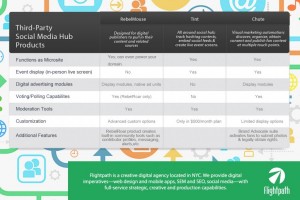What is overemployment? The controversial remote work trend, explained
Some workers are taking on extra jobs to supplement their income. Here’s how they balance it—and the risks it involves.
The remote work era has given employees more flexibility. For some, that means taking on a second job (and maybe a third and fourth, too).
These workers identify as “overemployed,” taking on multiple full-time jobs at a time to boost their net income. Where side hustles demand an hour or two after the 9-5, overemployed workers report holding multiple full-time gigs. A 2023 Monster poll found that 37% of respondents had more than one full-time job, a number that varies widely considering how many overemployed workers do so secretly.
Overemployment certainly has its risks: there’s the exhaustion of increased labor, as well as the possibility of dropping the ball and underperforming in one of the roles. For some, though, the promise of doubled income and greater financial flexibility is too great to pass up.
What is overemployment?
Overemployment comments on Reddit and TikTok run amok with jargon. Commenters wouldn’t even call themselves overemployed, opting for the simpler OE instead. Then there’s the job ranking: J1 is that primary work position, while J2 is the first add-on gig (spiraling into J3 and J4 for however many positions the workers take on). Each job is valued by their HPW, or hours worked per week.
Most overemployed workers stay under the radar, posting anonymously on Reddit. Maintaining performance good enough at both of the gigs, without the employers necessarily knowing about each other, is half the battle.
“I think it’s great for individuals who are able to get away with it,” says entrepreneur and FIRE advocate Frank Niu in a TikTok. “If your employer doesn’t notice a drop in productivity and you’re not getting fired for underperformance, I don’t really see what the problem is from a corporate standpoint.”
Overemployment is all about income; many cite costs of living as their impetus for taking multiple jobs. As one anonymous worker told Salary Transparent Street, “The state of the economy is so unstable now and relying on a contract, or any full-time employment really, is too hard to alleviate that concern.”
Remote work is declining
Overemployment is nothing new, with the trend ballooning during the virtual work boom of 2020. Still, OE forums remain vibrant online, and shifts in its participation are worth noting—especially considering its apparent decline.
Fully remote work is crucial to overemployment so an employee can work in multiple gigs. But wholly virtual setups are on the decline: A 2023 Pew Research study found that only 35% of workers reported full-time WFH positions, down 43% from the previous year. Many employers have switched to a hybrid model, asking employees to come into the office at least a few days a week.
Meanwhile, some employers are catching on to overemployment trends. Mouse-movers are a popular OE tool, keeping an online work status active even when away. In May, Wells Fargo disclosed to the Financial Industry Regulatory Authority that the bank had fired nearly a dozen employees following allegations of “simulation of keyboard activity.”
Maintaining multiple jobs can also be taxing. The Reddit forum touts both advice for keeping up OE work and dealing with the ensuing stress. “I’ve been seeing a lot of posts about J1/2/ stressing people out. Too many meetings, working more than 8 [hours], how to handle crossover,” wrote Redditor @augustusvondoom in a popular thread. “Prioritize mental/physical health and the money will follow.”

ABOUT THE AUTHOR
(9)
Report Post





